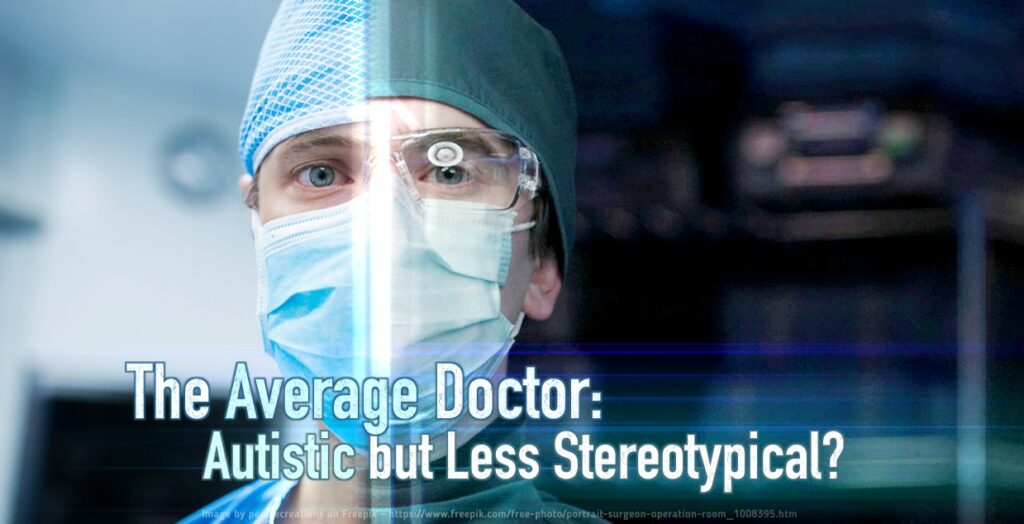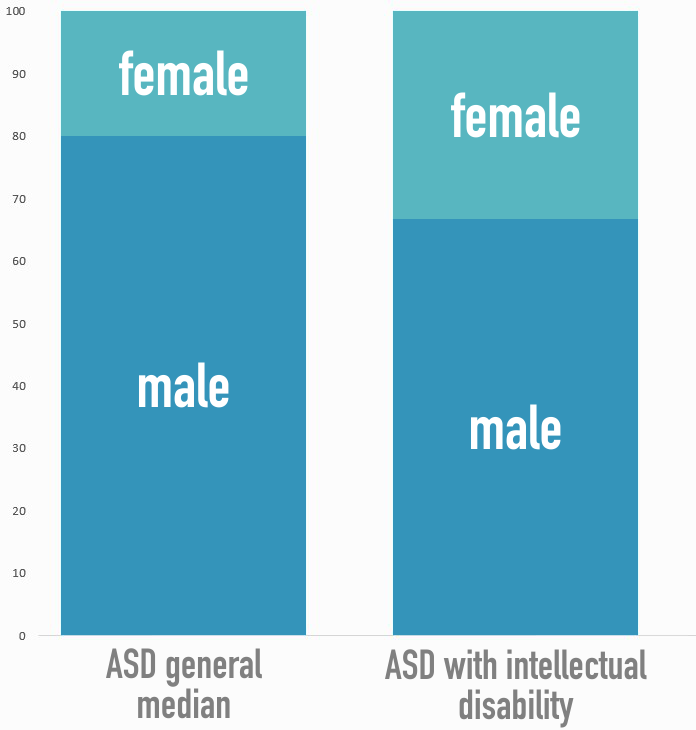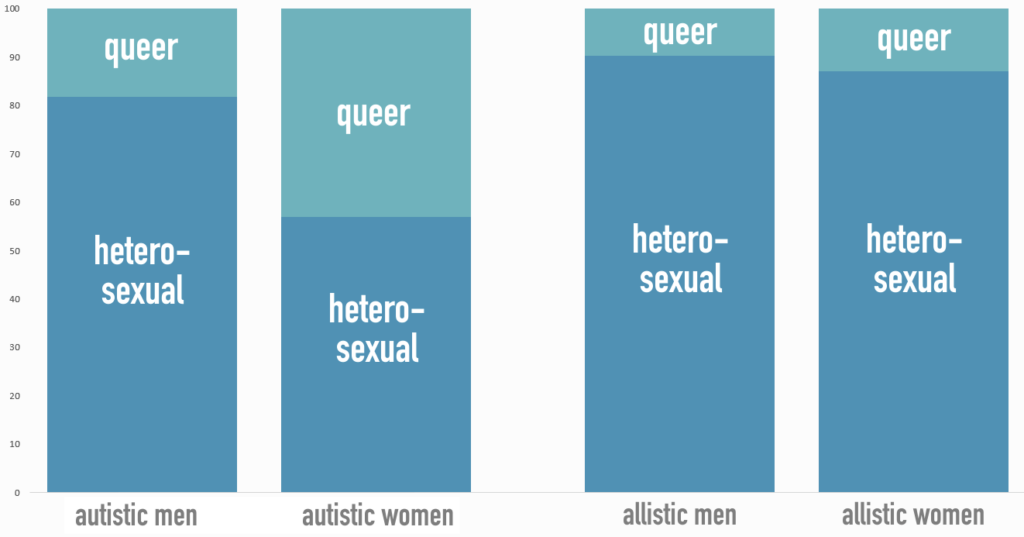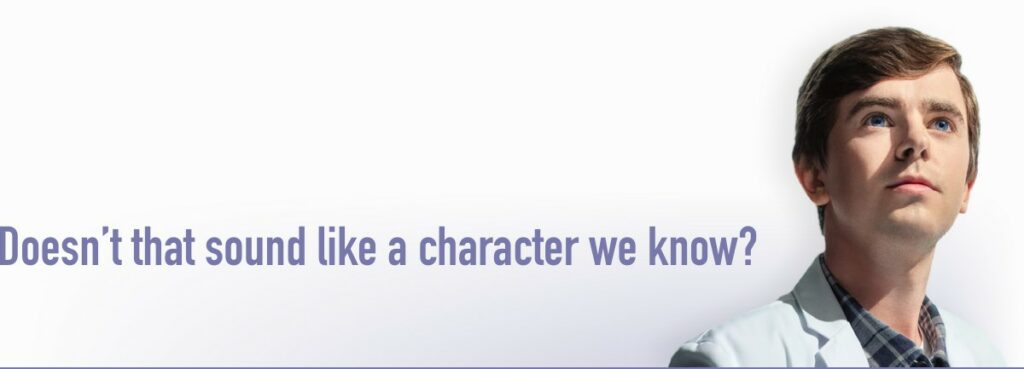
by Andreas_from_Germany (crossposted to Reddit)
Recently many autistic individuals have come forward on social media and criticized The Good Doctor for its depiction of autism being too stereotypical, demanding more diversity in the representation.
Setting aside the problem of burdening a single character with all the possible variations imaginable, what does science tell us about life with autism? How could a reasonable approximation of autism, condensed down into one fictional character, look like?
It is important to note that statistics on autism can vary greatly due to methodology and specific context, thus I would advise to rather focus on the overall picture than crunching the numbers.
Prevalence And Demographics

According to a 2020/2021 meta-analysis, global prevalence of autism diagnosis has risen (attributed mostly to better awareness and screening) to a median of 1%. ASD is still considered a rare condition.
The median male-to-female ratio was found to be 4:1. Other studies suggest that due to diagnostic gender bias, this ratio might be closer to 3:2 (2:1 in individuals with intellectual disability – henceforth “ID”).
Presentation of ASD
To meet the diagnostic criteria as per ICD-11, an individual with autism spectrum disorder must present with:
- persistent deficits in initiating and sustaining social communication and reciprocal social interactions that are outside the expected range of typical functioning given the individual’s age and level of intellectual development
- persistent restricted, repetitive, and inflexible patterns of behaviour, interests, or activities that are clearly atypical or excessive, including e.g.
- distress by trivial changes to familiar environments
- adherence to routines and rules
- excessive ritualized patterns of behaviour
- repetitive and stereotyped motor movements
- persistent preoccupation with special interests
- hyper- or hyposensitivity to sensory stimuli
- the symptoms result in significant impairment in personal, family, social, educational, occupational or other important areas of functioning

IQ distribution in ASD differs significantly from the general population, with 58% of students with ASD scoring outside of the average range (IQ 85-115), compared to 32% of the general population. About 25-33% of autistic individuals present with a co-occurring ID (IQ 70 and below), while students with ASD are also 1.5 times more likely to score in the superior IQ range of 120 or above.
Abilities and Special Interests
In a large online survey, 70-80% of North American adults with ASD confirmed the ability for intense focus, honesty, creativity, good memory, and sense of justice. The majority (80% or more) reported special interests, with 34% being able to incorporate them into their jobs.
Numerous individuals on the autism spectrum have claimed that they tend to think in pictures rather than in words. Neuroimaging results suggest that autistic brains may favor the use of visual mediation strategies.
Socioeconomic Status
Employment rates among autistic adults varied between countries but were alarmingly low overall. In a US study among those diagnosed without ID, 61% were employed in 2015.
A 2023 German study on autistic adults without ID still found only 36% currently being employed despite them achieving above-average educational levels.
Autistic adults often struggled to obtain and hold positions matching their educational achievements. Interpersonal difficulties significantly more often resulted in job termination than other reasons. Compared to the general German population (35%), individuals with ASD were significantly more often long-term unemployed (79%).
Another German study found autistic adults venturing into a broad variety of occupational fields, defying the stereotype of natural science, informatics and engineering. Instead, health, social services and education was at the top of the list.
Living Arrangements
In a large Dutch sample with mostly (above) average intellectual abilities, 79% of the autistic adults lived independently, while the other 21% either stayed with their parents, partners or in assisted living.
In contrast, in a smaller Belgian sample without ID, only 10% were living on their own, and 9% with their partner, while 55% remained with their parents and 26% utilized assisted living.
Sexuality and Romance
Compared with non-autistic groups, autistic people demonstrated lower sexual knowledge, less formal/informal sexual education, less social contact with others, more inappropriate sexual behaviour, less awareness of privacy and more concern about sexuality related matters.
Recent studies focusing on autistic samples without ID also report romantic relationship experience at rates of approximately 25–50% currently being in relationships and 70–80% having been in at least one romantic relationship.
Most people with and without ASD identify in line with their assigned gender at birth and feel attraction to someone of the other sex (men 82%/women 57%; as compared to a non-autistic rate of 90%/87%). However, adolescents and adults with ASD reported non-heterosexual attraction more often than their peers in the general population.

With both men and women, less than 1% identified as the opposite of their gender assigned at birth. About 22% of women and 8% of the men with ASD reported some gender non-conforming feelings.
Conclusion
Now, what does all this mean for a faithful representation of autism in a fictional character?
This fictional character would more likely be male with normal to above-average IQ, higher education, pursuing a career in education or health services with intense focus.
They would live either independently or in some supportive arrangement.
They would adhere to strict routines and react negatively to changes. And albeit having a vast knowledge in their field of specialty thanks to good memory and their tendency for pursuing special interests, they would experience difficulties in finding and maintaining a job due to their deficits in social interaction.
They might be interested in heterosexual relationships, albeit less so compared to neurotypicals. Attempts to engage in romantic relationships are more prone to failure and less frequent.
They might also utilize a visual style of thinking that autistic scientist and autism advocate Temple Grandin spoke about: “[It’s] similar to an Internet search engine, set to locate photos. All my thoughts are in photo-realistic pictures, which flash up on the ‘computer monitor’ in my imagination. Words just narrate the picture. When I design livestock facilities, I can test run the equipment in my imagination similar to a virtual reality computer program.”


Leave a Comment